#metrosideros excelsa
Explore tagged Tumblr posts
Text
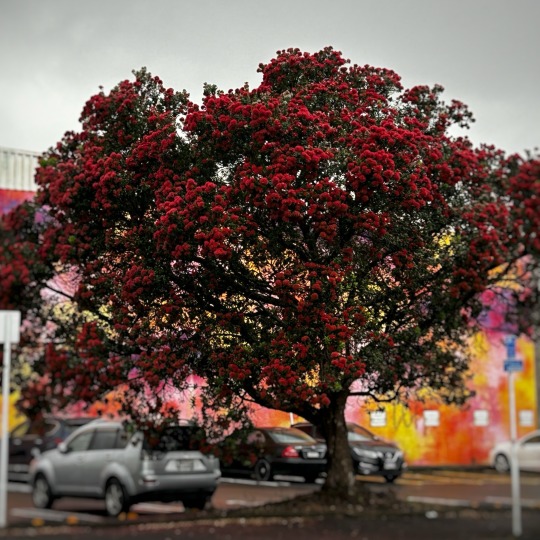
Christmas tree Kiwi-style
Best wishes for Christmas and the holiday season, and a happy year to follow, to all my tumblr friends and followers
37 notes
·
View notes
Text
100-Foot 'Walking Tree' In New Zealand Looks Like An Ent from Lord Of The Rings — And Is The Lone Survivor Of A Lost Forest
An Unusual Northern Rātā Tree that looks like it is striding across an empty field has been Crowned New Zealand's Tree of the Year. The Giant Plant, which looks strikingly similar to an Ent from "The Lord of the Rings," is Centuries old.
— By Harry Baker | June 5, 2024
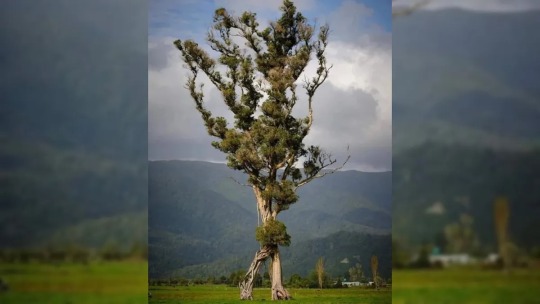
The "Walking Tree" is a Northern Rātā (Metrosideros Robusta). It is more than 100 Feet Tall and at least 150 Years Old. Image Credit: Gareth Andrews
A bizarre, giant tree with a pair of leg-like trunks looks like an Ent from "The Lord of the Rings" — and it has just been crowned New Zealand's Tree of the Year after strolling past the rest of the competition.
The strange tree, which has been nicknamed the "Walking Tree" because it looks like it's striding across a field, is a northern rātā (Metrosideros robusta) — one of New Zealand's tallest flowering tree species that can live for up to 1,000 years. It's roots and long, arm-like branches make the tree look like an Ent — a fictional race of tree-like creatures that guard the forests of Middle-earth.
The tree stands alone in the middle of a large paddock next to a cemetery near Karamea on the west coast of South Island. It is around 105 Feet (32 Meters) Tall — around the same height as a seven-story building, according to The New Zealand Tree Register.
The walking tree was the clear winner of the 2024 edition of the New Zealand Arboricultural Association's (NZ Arb) Tree of the Year award, walking away with 42% of the public vote, which included five other finalists, according to a statement emailed to Live Science.
"It just strode out into the lead right from the very start," competition organizer Brad Cadwallader told Radio New Zealand.
The walking tree is an "Exceptional Feature" and a "prime example of the remarkable trees that we, as New Zealanders, are fortunate to experience," NZ Arb President Richie Hill said in the statement.
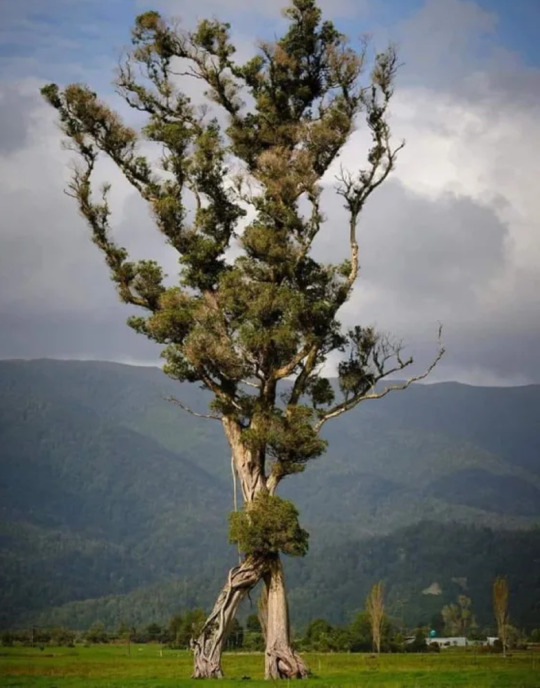
A tall tree with a pair of thick leg-like roots that make it look like the tree is walking. Image Credit: Gareth Andrews
It is unclear exactly how old the walking tree is, but award organizers noted it is the lone survivor of a forest that was cleared around 150 years ago. "The farming family back then clearly thought it was special because they left it," Cadwallader said.
Northern Rātā Trees Are Epiphytes — a type of tree that starts life growing on the surface of a host tree before growing aerial roots that eventually reach the ground. The walking tree likely began life high up in the canopy of its host, living off air and rainwater before reaching the ground. Its unusual root layout was likely caused by how it grew around its host tree, which probably died off centuries ago.
"That host tree has now gone," Cadwallader said. "Maybe the tree was either very, very big, or there may have been another tree that fell and lent against the host tree, and that's why the roots have split near the ground and given it that walking appearance."
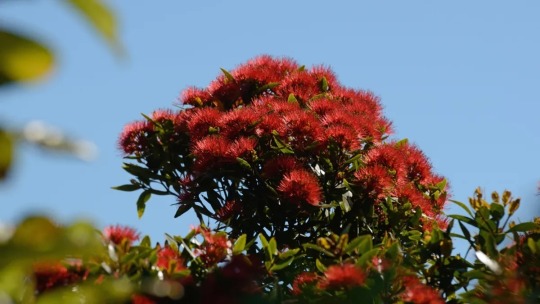
Northern Rātā Trees bloom bright red flowers between November and January. Image Credit: Shutterstock
Northern Rātā Trees are endemic to New Zealand and were once one of the most common species in the country's forests. However, their range has decreased over the last few decades and they are now listed as nationally vulnerable, according to the New Zealand Plant Conservation Network.
In addition to deforestation, the main threats to northern rātā are the invasive common brushtail possums (Trichosurus vulpecula), which destroy the trees by eating their leaves and gnawing at their roots.
The trees are also threatened by hybridization with the closely related Pōhutukawa Trees (Metrosideros Excelsa) and are susceptible to Myrtle Rust (Austropuccinia Psidii) — a Pathogenic Fungi native to South America that was detected in New Zealand for the first time in 2017.
#Planet Earth 🌍#Plants 🌱🪴#The Walking Tree#New Zealand 🇳🇿#The Lone Survivor | Lost Forest#An Ent#New Zealand Plant Conservation Network#Northern Rātā Trees Are Epiphytes#Brad Cadwallader#Exceptional Feature#NZ Arb | President | Richie Hill#Pōhutukawa Trees (Metrosideros Excelsa)#Myrtle Rust (Austropuccinia Psidii) | Pathogenic Fungi#Live Science
0 notes
Note
hi do you have any interesting british, australian, or new zealand stamps?
hi! here's a 2012 Aotearoa stamp from a series on native trees
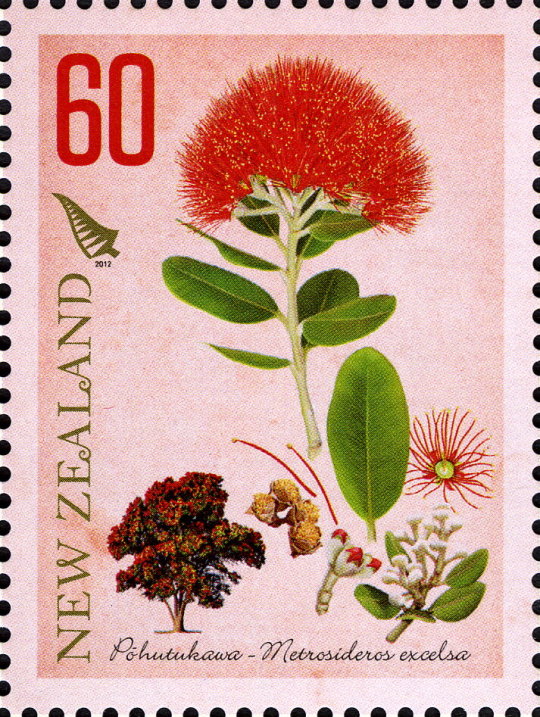
[ID: a postage stamp with various botanical illustrations of the Pōhutukawa tree. the tree has green oval shaped leaves. it also has bright red flowers with very thin, stringy petals. the stamp has been captioned "Pōhutukawa - Metrosideros excelsa". the face value of this stamp is 60 New Zealand cents. end ID]
129 notes
·
View notes
Text
Exploring Auckland's Unique Plants and Soil Types
Introduction
Auckland, New Zealand's largest city, boasts a rich tapestry of plant life and diverse soil types. Whether you're a seasoned gardener or a curious homeowner, understanding the interplay between soil and plants is crucial for cultivating a thriving garden.
Understanding Auckland's Soil Types
Auckland's soils are as varied as its plant life. Here's a breakdown of the primary soil types you'll encounter:
Clay Soils
Clay soils are dense and retain moisture well. They can be challenging to work with due to their heavy texture but are rich in nutrients. Proper drainage is essential to prevent waterlogging.
Sandy Soils
Sandy soils drain quickly and are easy to cultivate. However, they often lack nutrients and may require regular amendments to support plant growth.
Loamy Soils
Loamy soils are a balanced mix of sand, silt, and clay. They offer good fertility and structure, making them ideal for most plants.
Common Plants in Auckland Gardens
Auckland's climate supports a wide range of plants. Here's a look at some popular choices:
Native Plants
Kauri (Agathis australis): A majestic evergreen tree known for its towering presence.
Kowhai (Sophora microphylla): A small tree with bright yellow flowers, attracting native birds.
Pohutukawa (Metrosideros excelsa): Often called the New Zealand Christmas tree, it boasts vibrant red flowers.
Exotic Plants
Camellia (Camellia japonica): A hardy shrub with beautiful blooms, thriving in Auckland's climate.
Hydrangea (Hydrangea macrophylla): Known for its large, colorful flower heads.
Lavender (Lavandula angustifolia): A fragrant herb that adds a touch of elegance to gardens.
Soil Preparation and Plant Selection
To ensure your garden flourishes, consider the following steps:
Soil Testing
Before planting, test your soil to determine its pH and nutrient levels. This will guide you in selecting appropriate plants and necessary amendments.
Amending Soil
Based on test results, you might need to add compost, lime, or other soil conditioners to improve fertility and structure.
Choosing the Right Plants
Select plants that are well-suited to your soil type and local climate. This ensures better growth and resilience.
Conclusion
Auckland's diverse soils and plant life offer endless possibilities for gardeners. By understanding your soil and choosing compatible plants, you can create a vibrant and sustainable garden. If you're unsure where to start, Garden Experts can provide professional guidance to help you achieve a lush, thriving outdoor space.
FAQs
How often ought I get my garden cleaned up?
Conduct a simple jar test by mixing soil with water and observing the layers that settle.
What are the benefits of using native plants?
Native plants are adapted to local conditions, requiring less maintenance and supporting local wildlife.
How often should I amend my soil?
It's advisable to amend your soil annually or based on specific plant needs.
Can I grow exotic plants in Auckland?
Yes, many exotic plants thrive in Auckland's climate, but ensure they don't become invasive.
What is the best time to plant in Auckland?
The optimal planting times vary; refer to local gardening calendars for guidance.
Do I need to hire a gardener for my Auckland garden?
Hiring a gardener can be beneficial if you're unsure about soil preparation, plant selection, or regular maintenance. A professional can help improve soil quality, recommend suitable plants, and keep your garden thriving year-round.
By understanding Auckland’s soil types and selecting the right plants, you can create a beautiful and sustainable garden. Whether you manage it yourself or hire a gardener, proper care will ensure long-term success.
0 notes
Text
Insects on macro
On Metrosideros excelsa, pohutukawa flowers
0 notes
Text
youtube
The botanist Patrick Blanc, inventor of the Vertical Garden (Mur Végétal) takes you to a Field Trip in New Zealand, "The Land of the Long White Cloud" - Chapter 1 : Northern Island Filmed & produced by Pascal Héni Paspat 2013 Plant species list : Rhabothamnus solandri, Cyathea medullaris, Cordyline banksii, Lycopodium deuterodensum, Cordyline banksii, Agathis australis, Collospermum hastatum, Pseudopanax arboreus, Freycinetia banksii, Cyathea medullaris, Trichomanes reniforme, Dracophyllum latifolium, Knightia excelsa, Phyllocladus trichomanoides, Tui : Prosthemadera novaeseelandiae, Phormium tenax, Ripogonum scandens, Hymenophyllum sp., Schefflera digitata, Hedycarya arborea, Schistochila balfouriana, Hypnodendron sp., Blechnum fraseri, Elatostema rugosum, Rhopalostylis sapida, Blechnum novae-zelandiae, Pseudopanax crassifolius, Rubus cissoides, Knightia excelsa, Pseudocyphellaria cf. homeophylla, Blechnum chambersii, Metrosideros excelsa, Metrosideros robusta, Metrosideros perforata, Lycopodium (Huperzia) varium, Pseudopanax crassifolius, Rubus cissoides, Brachyglottis bidwillii, Gaultheria depressa var. novae-zelandiae, Dracophyllum recurvum, Hebe (Veronica) tetragona, Celmisia incana, Wahlenbergia pygmaea, Olearia arborescens, Dracophyllum subulatum, Dracophyllum recurvum, Celmisia spectabilis, Pimelea buxifolia, Parahebe (Veronica) hookeriana, Nothofagus solandri var. cliffortioides, Astelia fragrans, Sticherus cunninghamii, Coriaria pteridoides, Pseudopanax colensoi, Cordyline indivisa, Dracophyllum subulatum, Raoulia albo-sericea, Drosera spathulata, Hebe (Veronica) salicifolia, Dendroligotrichum (Polytrichum) tongariroense, Pterostylis patens, Hebe (Veronica) venustula, Olearia arborescens, Podocarpus nivalis, Cordyline cf. pumilio, Cordyline australis, Pseudopanax crassifolius, Rubus squarrosus, Macropiper (Piper) excelsum, Solanum laciniatum, Elatostema rugosum, Microsorum pustulatum, Calystegia tugoriorum, Nothofagus fusca, Cortaderia sp., Phormium cookianum, Cordyline australis, Urtica ferox, Parsonsia heterophylla, Dacrycarpus dacrydioides, Prumnopitys taxifolia
0 notes
Text
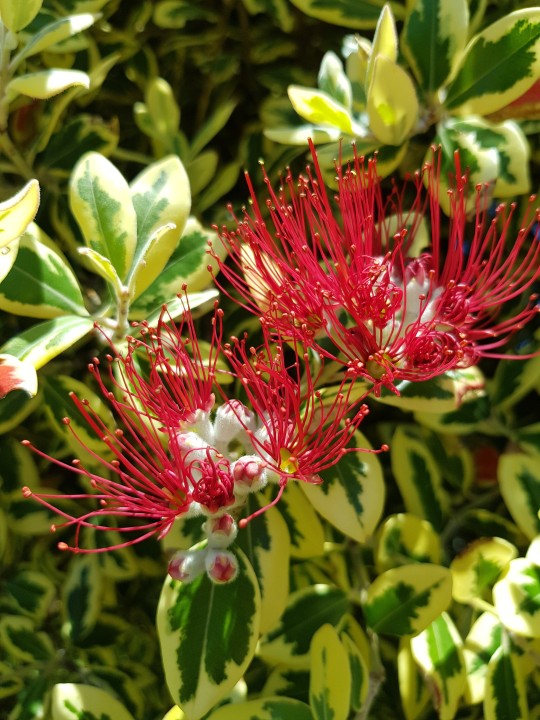
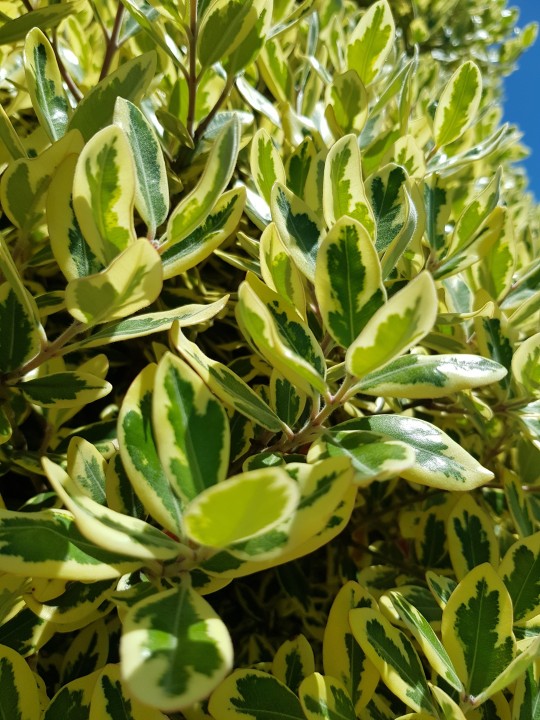

Check out this fabulous variegated metrosideros excelsa, or more commonly known as pohutukawa (or new zealand christmas tree)
#for ages i was convinced this was a bottlebrush#not true! in the same family tho#my photos#christmas tree#metrosideros excelsa#pohutukawa#< the o is supposed to have a line over it but that's not an option on my keyboard :(
3 notes
·
View notes
Text

Pōhutukawa (Metrosideros excelsa)
21 notes
·
View notes
Text




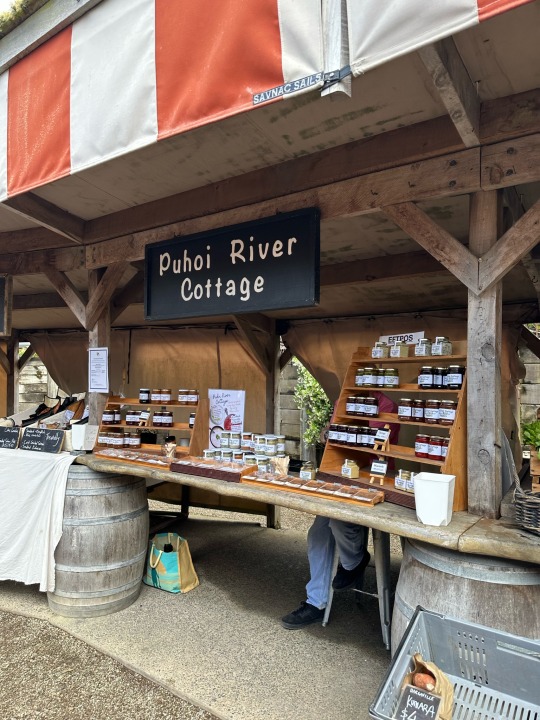

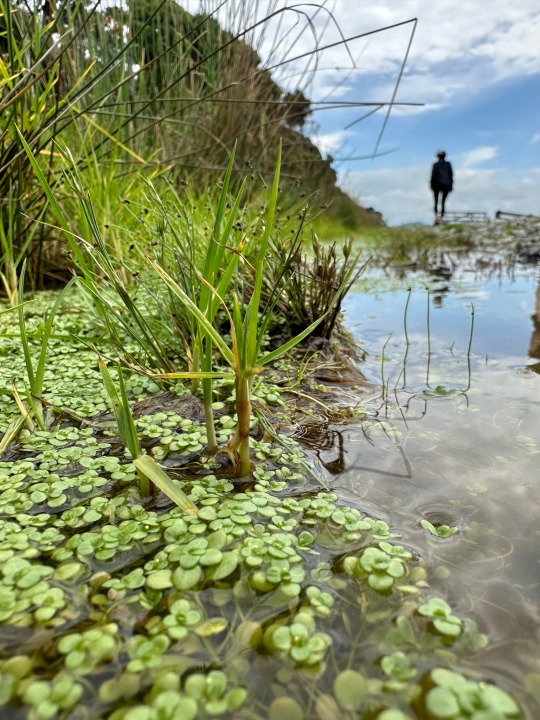
(Travel Journal)
New Zealand 2022: Culture and Nature
On our way to Tāwharanui Regional Park we passed by the lovely town of Matakana, where we visited the farmer's market and Christmas market. Really loved the vibes of Matakana - it was bustling in a very unfazed way, far from the hectic rush of big cities.
We did a nice easy walk along the Ecology Trail and Tāwharanui Regional Park. The landscape changed repeatedly along the walk, from coast to forest and back to coast again, and the flora and fauna shifted with it. It took us longer than we expected to finish the walk, and mostly because we were stopping so frequently to admire and photograph the place.
Special mention to Auckland Regional Botanic Gardens: the two rows of pohutukawa trees (Metrosideros excelsa) at the entrance boulevard provided such a magnificent welcome. The gardens were attentively curated with many blooming specimens on display, and lots of educational materials too, such as recommendations of native species to plant in home backyards. It rained when we were there, but even the gloomy weather couldn't dampen charm and elegance of the place.
P.S. I have a different set of photos on my journalgram here if you would like to see more photos!
#studyblr#study#studyspo#a students lifebuoy#bujo#problematicprocrastinator#myhoneststudyblr#heysaher#studyvan#blueplaidlook#travel#new zealand#auckland#ecology#nature#photography#photo dump#heyaltin#madistudiess#hiyatranquil#adelinestudiess#humbly
39 notes
·
View notes
Photo
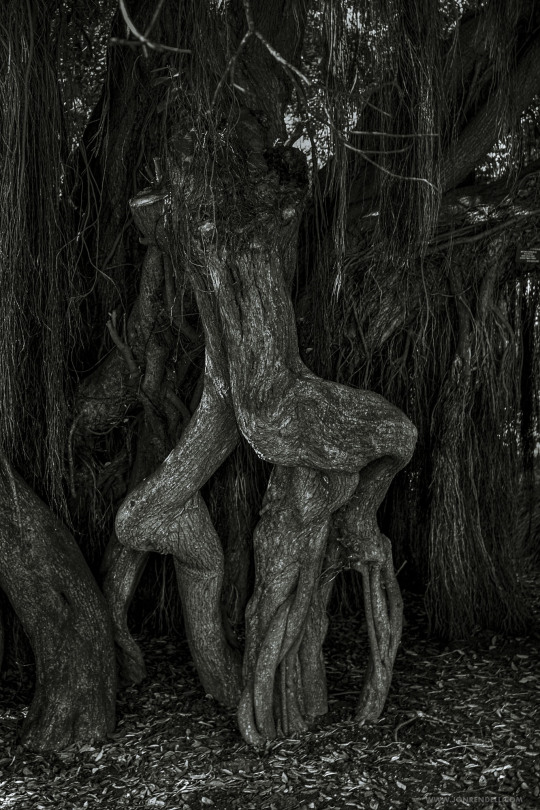
Day 31 — Roots
The pōhutukawa or New Zealand Christmas tree (Metrosideros excelsa) is an evergreen species native to the North Island of New Zealand. It’s bright flowers and distinct aerial roots hold cultural significance to the Māori people.
Pōhutukawa hold a prominent place in Maori mythology. Legends tell of the young Maori warrior, Tawhaki and his attempt to find help in heaven to avenge his father's death. He subsequently fell to earth and the crimson flowers are said to represent his blood.
The most famous pōhutukawa in Maori legend is a small, wind-beaten tree clinging to the cliff face near Cape Reinga. The 800-year-old tree is reputed to guard the entrance to a sacred cave through which disembodied spirits pass on their way to the next world.
6 notes
·
View notes
Photo




Underfoot, pohutucarpet remnants That's what our kids used to call the masses of fallen stamens from pohutukawa flowers after their Christmas-time show was over. This year the trees were late and uneven in blooming - scarcely any out for Christmas, after a wet, cold spring, and they have been flowering sporadically ever since. So not so many carpeted pavements, but even a single big tree can produce at least a red rug.
28 notes
·
View notes
Text
List 5 TV shows that make you feel better and tag 10 other blogs.
Thank you @ronordmann for tagging me! 🥰
1. North and South
2. Haikyu!!
3. Black Clover
4. Dragonball Super
5. My Hero Academia
I’m tagging @fizzyxcustard @riepu10 @forbiddenfantasies1 @la-ermitana @metrosideros-excelsa @the-good-queen-alysanne @mezzmerizedbyrichard @mzperx0506universe @dizzyfingers18 @pascalplease Only if you want to play, no obligation
177 notes
·
View notes
Video
vimeo
Silent Inhabitants from visiophone on Vimeo.
Silent Inhabitants is an audiovisual exploration focused on classified trees specimens from the city of Porto.
These trees, silent inhabitants , who have been living in our cities for dozens of years (some for hundreds) have witnessed key historical events and transformations in the city's urban fabric.
. The trees were digitally captured by photogrammetry techniques, then transformed in point clouds and used as catalyst for audiovisual exploration.
. By order of appearance:
Metrosideros excelsa #1 (Av Montevideu, Porto)
Magnolia (Trindade, Porto)
Quercus Suber (Museu Romântico da Quinta da Macieirinha, Porto)
Metrosideros excelsa #2 (Av Montevideu, Porto)
Open fields by the Ovelhariver (Aboadela, Amarante). . Audio-reactive visuals generated in realtime with VUO. . Concept, photogrammetry, visuals: Rodrigo Carvalho Sound: Francisca Rocha Gonçalves
1 note
·
View note
Video
Mycena parsonsii. by Bernard Spragg. NZ Via Flickr: Common name: Pink helmet fungus Mycena parsonsii is a small saprophytic fungi, a member of the gilled mushrooms. It grows in clusters on dead wood of Kunzea ericoides, Leptospermum scoparium, Dacrycarpus dacrydioides, Metrosideros excelsa and other Metrosideros species in lowland podocarp dicotyledonous forest throughout New Zealand in autumn and early winter. It can also grow on the wood of introduced trees.
#Mycena parsonsii.#nature#macro#mushroom#lumix#wet knee#close up#forest floor#ExploreNatureTheWildNature#Lumix FZ1000#cco
17 notes
·
View notes
Text
#1959 - Metrosideros excelsa - Pōhutukawa
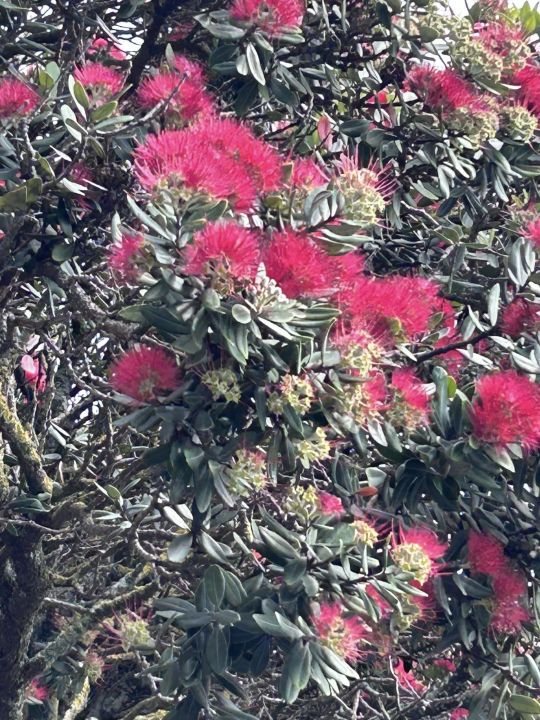
AKA New Zealand Christmas Tree, Antipodean Holly, and Iron Tree. Metrosideros derives from the Ancient Greek for "heartwood" and "iron", and excelsus from the Latin for "highest, sublime".
Photo by @purrdence, at Napier in NZ.
Given the appallingly high number of introduced plants in New Zealand, it’s nice that one of the best natives is still around. A coastal evergreen that grows to 25m tall and 35 wide, in ideal conditions, but highly regarded for its ability to live in very much not ideal conditions, such as the most exposed cliff-faces and lava fields. The brilliantly red mass of stamens (and sometimes orange, yellow, or white) also have earned it many admirers. Regarded as a chiefly tree (rākau rangatira) by the Māori. Their trunks and branches are sometimes festooned with matted, aerial roots (the one growing in my grandparent’s backyard certainly did) and the underside of the oblong, leathery leaves are covered in densely packed white hairs.
The pōhutukawa and the related rātā species form twelve Metrosideros species endemic to New Zealand. Other species are found over the South Pacific, Hawaii, Papua New Guinea, to the Bonin Islands near Japan, and a number of sub-Antarctic islands. There used to be species in Australia, from 25myo and 35myo, but they died out for unknown reasons. Possibly their susceptibility to fires, although the amount of damage the introduced Brushtail Possum does to Metrosideros in New Zealand might also be a clue.
Their original range was the coastal zone of the North Island, north of 39° S, but it grows well in other parts of the island, and has naturalized in the cliffs around Sydney, Australia, can cause problems in Caifornia, and is regarded as invasive in South Africa. Given that it’s lost 90% of its original range to deforestation, people still use them for firewood, and they’re vulnerable to Myrtle Rust fungus, it’s just as well it has other options.
Pōhutukawa wood is dense, strong and highly figured and used traditionally for beaters and other small heavy items, and in shipbuilding, since the naturally curvy shapes made strong bracing timbers. Medically, extracts were used to treat diarrhoea, dysentery, sore throat and wounds.
Māori legend tells of Tawhaki, a young Maori warrior who attempted to find heaven to seek help in avenging the death of his father. He fell to earth and the crimson flowers represent his blood.
A particular 800-year-old pohutukawa on the windswept cliff top at Cape Reinga, the northern tip of New Zealand, is venerated as ‘the place of leaping’. From here the spirits of the dead leap off the headland and climb down the gnarled, twisted roots of the tree, descending into the underworld on their return journey to the traditional homeland of Hawaiki.
24 notes
·
View notes









